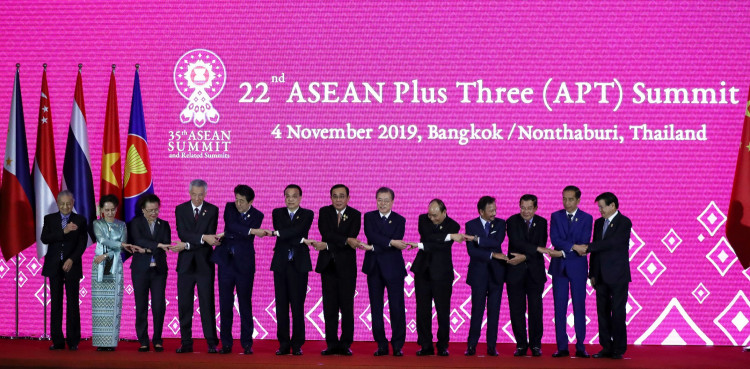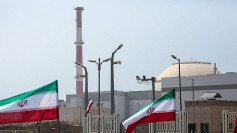Two major summits in Asia have captured global attention this week: the annual ASEAN leaders' series of events in Indonesia and the upcoming G20 summit in India. Meanwhile, intra-regional trade in Asia is gaining momentum, particularly the deepening economic and trade ties between China and Southeast Asian nations. Observers suggest that a new wave of trade trends is taking shape.
On Tuesday, international media, citing a 12-month moving average data compiled by HSBC, reported that intra-regional trade in Asia is flourishing. China's exports to the Association of Southeast Asian Nations (ASEAN) members have soared to nearly $600 billion a month, far outpacing the U.S. and the EU.
China has maintained its position as ASEAN's top trading partner for 14 consecutive years, while ASEAN has been China's top trading partner for three years. According to China's General Administration of Customs, the total trade volume between China and ASEAN in 2022 reached $975.3 billion, 2.2 times that of a decade ago. In the first seven months of this year, trade between China and ASEAN amounted to $519 billion, accounting for 15.3% of China's foreign trade.
Frederic Neumann, HSBC's Chief Economist for Asia, noted that the trade corridor between ASEAN and China has become one of the major global trade routes. Intra-Asian trade is heating up, and closer ties between ASEAN and China help stabilize global trade, especially as demand in developed markets declines.
Neumann attributes this shift largely to the Regional Comprehensive Economic Partnership (RCEP), which came into effect last year. As the world's largest free trade alliance, RCEP has reduced tariffs and simplified customs procedures. In addition to the ten ASEAN countries, RCEP also includes China, Japan, South Korea, Australia, and New Zealand.
Furthermore, Neumann believes this trend underscores a restructuring of global supply chains. Components from China are increasingly being moved to Southeast Asia for final assembly before being exported to other parts of the world.
Other economists had earlier observed this trend. In March, Sebastian Eckardt, Deputy Director of the Macroeconomics, Trade, and Investment Department for East Asia and the Pacific at the World Bank, and his colleagues wrote that emerging East Asian economies, which include mainland China, Hong Kong, Indonesia, South Korea, Malaysia, the Philippines, Singapore, Thailand, and Vietnam, are rising in global trade. They now account for 17% of global goods and services trade, with their trade-to-GDP ratio averaging 105%, far exceeding Latin America (73.2%), South Asia (61.4%), and Africa (73.0%), and second only to the highly integrated EU (138.0%).
Intra-regional trade among these economies has also "dramatically" expanded over the past 20 years. Over the past decade, intra-regional trade growth accounted for just over half of the total export growth of emerging East Asian economies, while exports to the EU, Japan, and the U.S. accounted for about 30%.
Eckardt highlighted that this trade integration was initially driven by rapidly growing intra-industry trade, reflecting the spread of global value chains. Production processes are more geographically dispersed across the region, leading to a sharp increase in intermediate goods trade among economies, while the EU, Japan, and the U.S. remain the main export markets for final products.
Amanda Murphy, Head of Commercial Banking for South Asia and Southeast Asia at HSBC, said that Southeast Asia is clearly an attractive manufacturing base. Its increasingly advanced supply chains and skilled labor force are drawing global companies, while its growing domestic consumption is garnering more attention from international businesses.
Eckardt also emphasized this trend, noting that while emerging Asian economies are often seen as the world's factory, their domestic consumption markets are rapidly expanding and are beginning to shape the next wave of intra-regional and global trade trends. Intra-regional trade is no longer primarily reflecting shifts in production patterns but is being driven by the growing ability to absorb final products internally.
He cited data suggesting that in 2000, for every $1 of export value generated by emerging Asian economies, only about 12 cents met regional consumption or investment needs. Today, this ratio has risen to over 30 cents.
This is largely due to rapid income and population growth and the swift rise of the middle class. According to the Brookings Institution, emerging East Asian economies are expected to become the world's largest consumer market at some point this decade.
Eckardt advised policymakers in the Asian region to pay attention to this trend shift. Domestically, policies should be expanded to support private consumption capacity, while externally, barriers to regional trade should be reduced to deepen regional integration. He pointed out that while most goods tariffs within the region are already at relatively low levels, various non-tariff barriers remain significant. Multilateral trade agreements like RCEP and the Comprehensive and Progressive Agreement for Trans-Pacific Partnership (CPTPP) offer opportunities to address these constraints.
Multinational companies are also increasingly bullish on investment prospects in Southeast Asia. According to another survey released by HSBC on Wednesday, multinational companies are planning to expand their operations in Southeast Asia through mergers and acquisitions.
Companies surveyed expect regional sales to grow by 23.2% over the next 12 months, up from the 20.1% growth rate reported in last year's survey. Nearly a quarter of companies plan to significantly increase mergers and acquisitions this year, with a third expecting to achieve this goal next year. Companies from Asia-Pacific countries are more likely to plan acquisitions, with Chinese companies being the most willing. 65% of Chinese respondents said they are more likely to significantly boost regional growth through mergers and acquisitions by 2024, while the proportion for the UK, France, and Germany is less than 50%.
The survey was conducted from July 25 to August 2. Respondents included key decision-makers from 3,509 companies in China, India, the UK, France, Germany, the U.S., Australia, and the Gulf Cooperation Council countries. These companies have sales of at least $5 million and have business interests in at least one ASEAN market.






